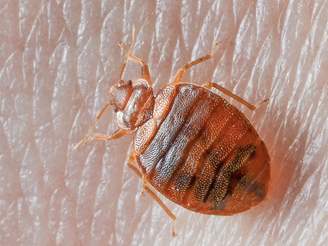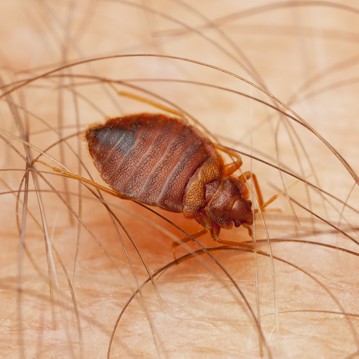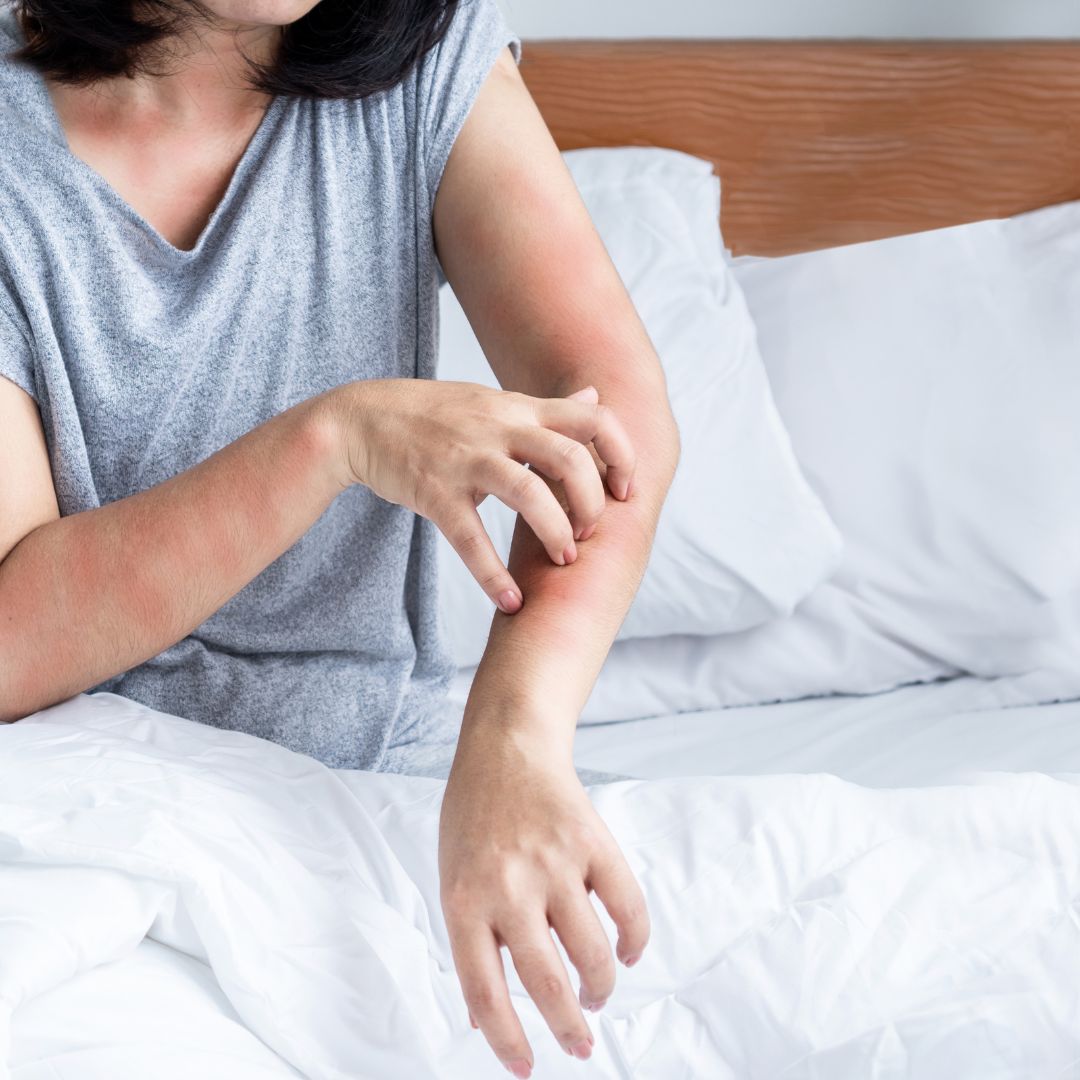


Bed bugs—just the mention of them can make anyone’s skin crawl. These tiny, elusive pests are notorious for hitchhiking into homes and causing sleepless nights. But the sooner you identify them, the better your chances of avoiding a full-blown infestation. This guide is here to help you identify bed bugs early, understand the telltale signs of their presence, and, more importantly, learn how to keep them far away from your home. Let’s dive in!
What Are Bed Bugs?
Before we get into identification, it’s important to know what bed bugs actually are. Bed bugs are small, wingless insects that feed on the blood of humans and animals, typically at night. They’re a common household pest, especially in places with lots of people coming and going (think hotels, apartment complexes, etc.).
Bed Bug Basics:
- Size: About 4-5 mm long (about the size of an apple seed).
- Shape: Oval, flat bodies when unfed; rounder after feeding.
- Color: Reddish-brown when unfed, more red and swollen after feeding.
- Lifespan: 4-6 months, but they can live up to a year in cooler conditions without feeding.
How to Identify Bed Bugs
So, how can you tell if bed bugs have moved into your home? There are several key indicators, and while they’re experts at hiding, there are certain places and signs you should always be on the lookout for.
1. Bite Marks
One of the first clues that bed bugs are around is waking up with mysterious red, itchy bite marks. Bed bugs typically bite exposed skin during sleep. Their bites often appear in clusters or lines. The itchiness can vary based on skin sensitivity, and not everyone reacts to bites, which makes them harder to detect.
2. Spotting Live Bugs
Though bed bugs are small, they’re visible to the naked eye if you know where to look. Check the seams of your mattress, behind headboards, in cracks or crevices, and even under furniture. They tend to hide during the day and come out at night, so it’s best to inspect your home when it’s quiet and dark.
3. Dark, Rusty Spots
Bed bugs leave behind telltale dark spots. These spots are either digested blood or fecal matter. You’ll often find these stains on your sheets, mattress, or around their hiding places, like the corners of your mattress or behind wallpaper.
4. Eggs and Shell Casings
If an infestation has been growing for a while, you may spot eggs, nymphs (young bed bugs), or molted skins. Eggs are tiny (about 1mm), white, and difficult to spot without a magnifying glass. Look closely in the corners of your mattress or other tight spaces.
5. Unusual Smell
A heavy infestation of bed bugs can produce a sweet, musty odor. It’s often compared to the smell of coriander or overripe fruit. If you notice a strange scent in your bedroom or living areas, that could be a sign of trouble.
Common Places Bed Bugs Hide
These pests are called bed bugs for a reason, but they don’t just limit themselves to your bed. Here’s a list of common hiding spots:
- Mattress seams and box springs
- Behind headboards
- Inside cracks or gaps in walls or floors
- Behind baseboards or under carpet edges
- Inside electrical outlets
- Upholstered furniture (sofas, chairs)
- Luggage, backpacks, or purses
- Closets, especially near clothing seams
How Bed Bugs Get Into Your Home
Bed bugs are expert hitchhikers. Here are the most common ways they enter homes:
1. Travel
Staying in hotels, hostels, or short-term rentals? That’s one of the quickest ways bed bugs can get into your belongings. They latch onto your luggage, clothing, or other items and ride back home with you.
2. Used Furniture
Second-hand furniture is often a goldmine for bed bugs. Be extra cautious when buying or picking up used couches, mattresses, or other upholstered items.
3. Visitors
Sometimes, it’s not you bringing them in—guests can unknowingly carry bed bugs into your home on their clothing, bags, or personal items.
How to Prevent Bed Bugs
Prevention is always better than dealing with an infestation. Here are some practical steps you can take to avoid letting bed bugs into your home:
1. Inspect Hotel Rooms
When traveling, always inspect the hotel bed. Check the mattress seams, behind the headboard, and furniture near the bed. Keep your luggage on a luggage rack, away from the bed and floor. After you return home, wash and dry your clothing on high heat.
2. Be Cautious with Used Furniture
If you’re bringing second-hand furniture into your home, inspect it thoroughly before buying or bringing it inside. Check cracks, seams, and crevices for signs of bed bugs. If you’re unsure, skip it—it’s not worth the risk!
3. Vacuum Regularly
Regular vacuuming can help remove bed bugs or eggs before they get a chance to settle in. Pay special attention to carpets, rugs, and furniture.
4. Seal Cracks and Crevices
Make it harder for bed bugs to hide by sealing cracks in walls, baseboards, and furniture. The fewer places they have to hide, the better.
5. Use Mattress Encasements
A zippered, bed bug-proof encasement for your mattress and box spring can be an excellent barrier. Even if bed bugs get in, they won’t be able to nest in your mattress.
What to Do If You Already Have Bed Bugs
If you suspect or confirm that bed bugs have made it into your home, it’s important to act fast to prevent the problem from getting worse. Here’s what you can do:
1. Confirm the Infestation
Before starting any treatments, make sure you’re dealing with bed bugs. A pest control expert can help you confirm if the signs you’ve found are from bed bugs and not another pest like fleas.
2. Call a Professional Exterminator
While DIY treatments exist, bed bugs are notoriously difficult to eliminate. Professional exterminators have the expertise and tools necessary to tackle a full infestation. Many treatments use heat, which is highly effective because bed bugs can’t survive at high temperatures.
3. Isolate and Treat Belongings
To stop the spread, isolate your belongings in sealed bags. Wash clothes and bedding in hot water and dry on the highest heat setting. For items that can’t be washed, try placing them in a dryer on high heat for at least 30 minutes.
4. Use Bed Bug Sprays
Some insecticides are labeled for bed bugs, but use them with caution. Always follow the instructions and remember that it’s very unlikely one round of spraying will solve the problem.
FAQs
1. Can I get rid of bed bugs on my own?
It’s possible, but difficult. Bed bugs are experts at hiding, and their eggs can survive many common treatments. Hiring a professional exterminator is often the best course of action.
2. How fast do bed bugs spread?
Bed bugs can spread quickly, especially in multi-family dwellings. They reproduce rapidly, and a small problem can become asignificant infestation in a matter of weeks.
3. What should I do if I find bed bugs in my hotel room?
Notify the hotel staff immediately and request a new room far from the infested area. Wash all your belongings on high heat when you get home.
Why Call STL Pest Control?
If you’re dealing with a bed bug infestation or want to ensure your home remains pest-free, calling a professional pest control service is your best option. Here’s why STL Pest Control should be your go-to:
1. Expertise and Experience
STL Pest Control has been in the business for years and understands the unique challenges that bed bugs present. With trained technicians who are experienced in identifying and eliminating bed bugs, they’ll get the job done right the first time.
2. Customized Treatment Plans
No two infestations are the same. STL Pest Control takes the time to assess the situation and create a customized treatment plan tailored to your home’s specific needs. Whether it’s a heat treatment, chemical solution, or a combination of methods, they’ve got you covered.
3. Safe and Effective Solutions
When dealing with bed bugs, safety is key. STL Pest Control uses eco-friendly, safe treatments that are effective at eliminating pests without putting your family or pets at risk. You can rest easy knowing their methods are safe for your home environment.
4. Quick Response Time
When you have bed bugs, time is of the essence. STL Pest Control offers fast response times, so you don’t have to suffer through sleepless nights or risk spreading the infestation. Their team is ready to tackle your pest problem as soon as possible.
5. Long-Term Prevention
STL Pest Control doesn’t just remove bed bugs; they help you prevent future infestations. They provide tips and ongoing solutions to ensure your home remains bed bug-free long after treatment is complete.
If you’re looking for a reliable, experienced, and customer-focused pest control service, STL Pest Control is the solution you need. Give them a call today to reclaim your home from bed bugs!

